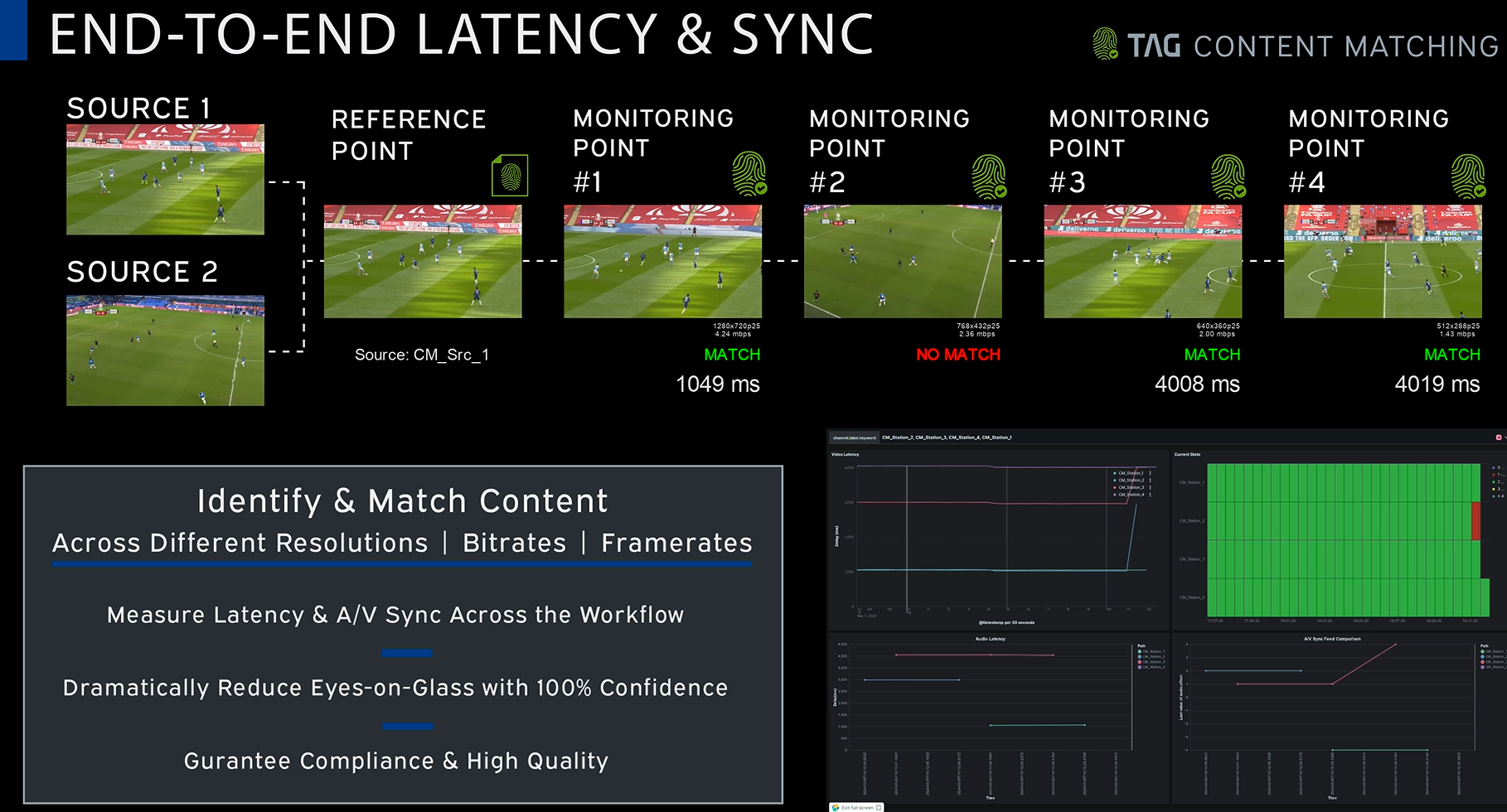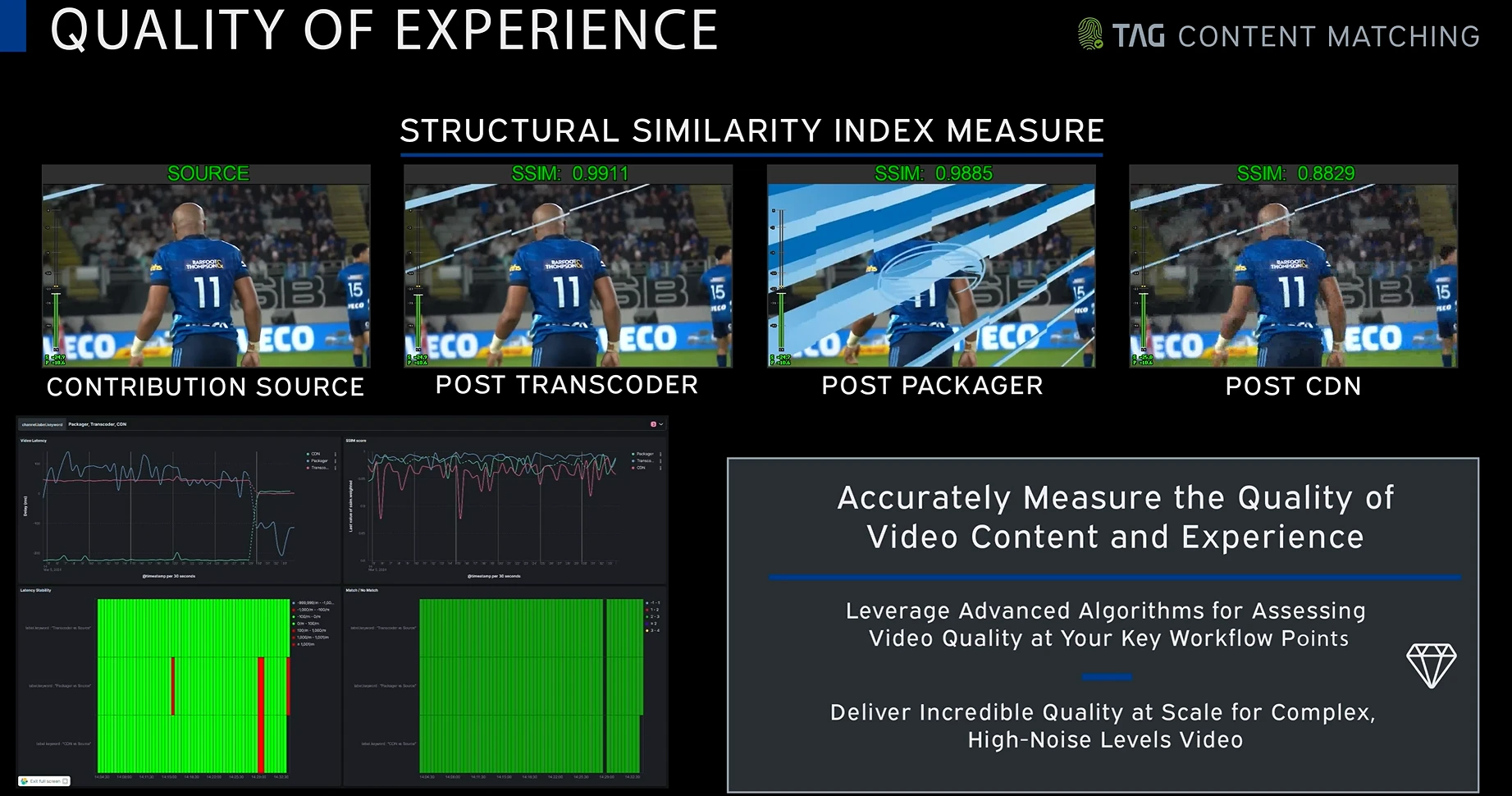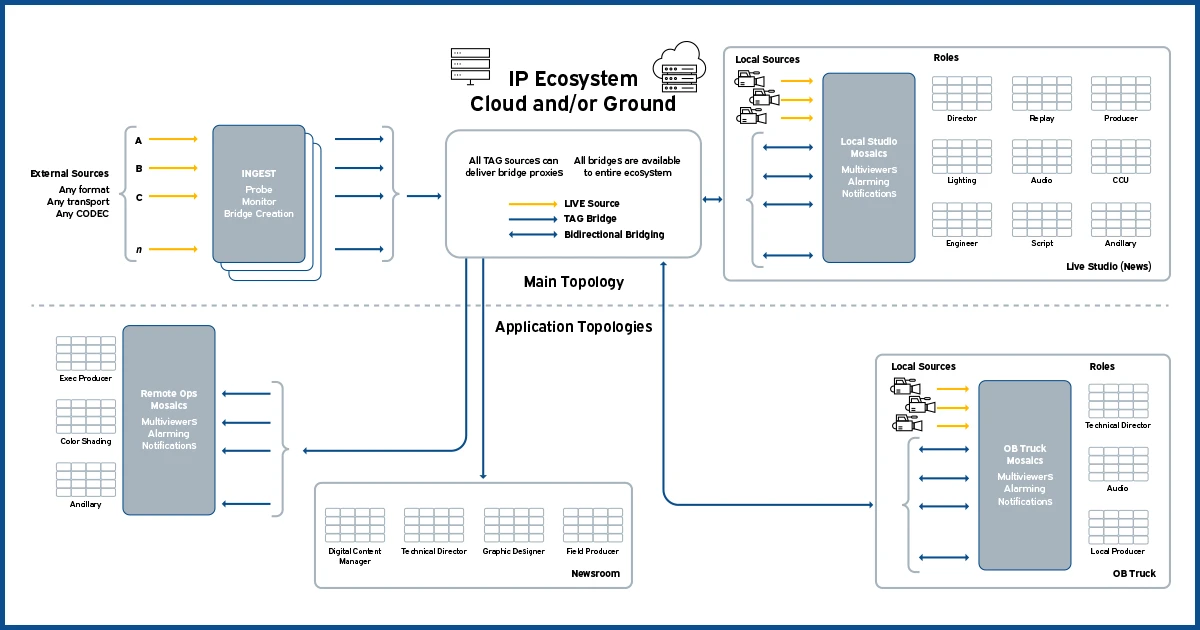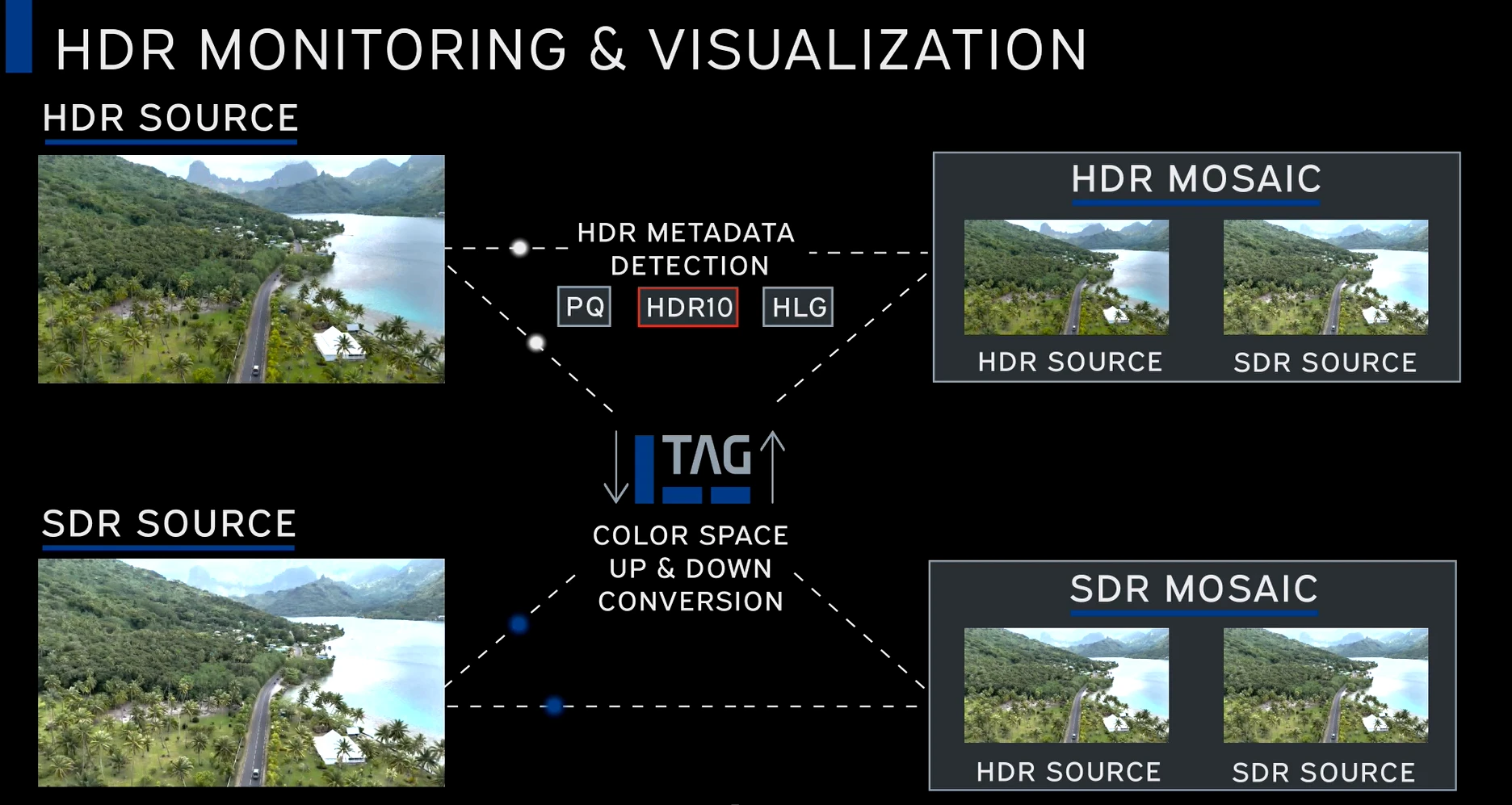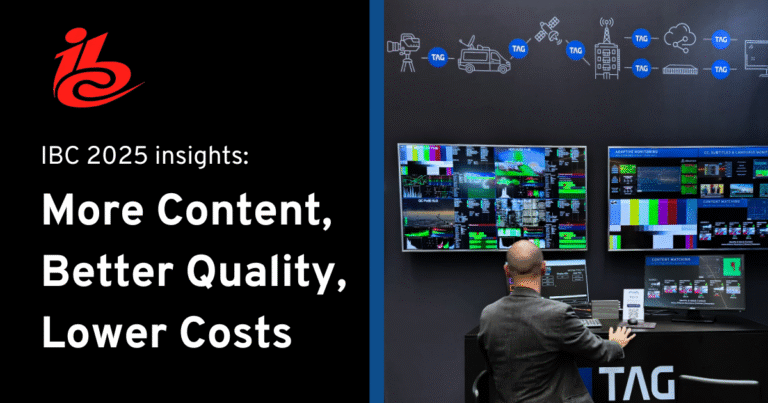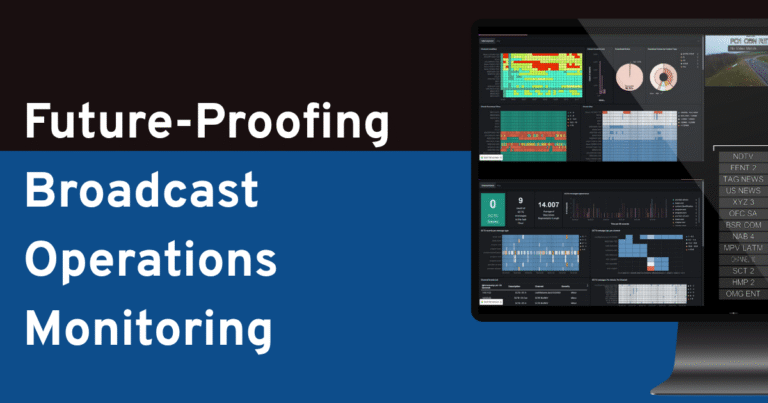TAG’s Realtime Media Platform goes beyond monitoring
If you google ‘multiviewing’, a mere 847,000 search results pop up. TAG Video Systems is right up there, on the first page. Which is great. However, although TAG is known for its exceptional ultra-low latency multiviewer adaptable to every media workflow, multiviewing is only one small component of the TAG Realtime Media platform – a comprehensive toolset that manages and elevates media performance across operations at any scale, setting TAG in a class of its own. TAG’s unique differentiators enable broadcasters and media companies to unlock significant operational efficiency and flexibility, so we’ve picked a few, outlined below.
Content Matching
Content Matching is TAG’s unique and award-winning process that ensures content is delivered in real time to its intended destination without errors or discrepancies. Content Matching identifies potential issues and confirms signal integrity, leading to increased broadcaster confidence and a high-quality viewer experience.
Content Matching creates a unique fingerprint for video streams to match them across the entire media distribution path. It accurately identifies and correlates audio and video uniqueness regardless of the resolution, bitrate, or framerate, thus enabling a match between two or more points in the workflow. This technology notifies users when the first content inconsistency occurs allowing them to get to the root cause of problems faster and troubleshoot more efficiently. Workflow complexity is dramatically reduced, allowing operators to work more efficiently by reducing “eyes-on-glass” while ensuring consistent delivery of quality content.
Content Matching can be applied to the most requested applications including frame-accurate latency measurement, SCTE ad insertion, AV alignment and audio channel drift validation.
Integration of Structural Similarity Index Measure (SSIM)
TAG’s platform is designed to deliver an unparalleled viewer experience by combining advanced Quality of Experience (QoE) and Quality of Service (QoS) tools. Based on Content Matching Technology, TAG now supports straightforward, reference-based QoE measures like Structural Similarity Index Measure (SSIM), an industry-leading algorithm that mimics human visual perception to assess video quality in real time. SSIM is seamlessly integrated with TAG’s Content Matching technology allowing for precise comparisons between reference (e.g., source at acquisition) and other points along the workflow (e.g, before/after encoders/packagers). This standardized evaluation simplifies quality assurance across workflows, ensuring a consistent and high-quality viewer experience.
However, TAG’s commitment to quality goes beyond SSIM. The platform also includes comprehensive QoS features that monitor video and audio parameters, signal loss, jitter, latency, and compression artifacts. Together, these tools provide operators with a comprehensive view of stream quality, ensuring both visual and technical fidelity throughout the entire media workflow.
TAG Bridge
TAG Bridge solves two major problems. It helps reduce the bandwidth needed to deliver uncompressed video from the receiving device to a remote location for multiview generations, and it eliminates the need to process the same source multiple times.
This technology is designed to handle various transport methods, such as 2110 uncompressed video or compressed MPEG TS streams, and many others.
TAG’s Bridge removes the complexity of routing the same stream across multiple locations ensuring efficient resource use with minimal bandwidth and compute requirements. This proprietary technology enables an operator to receive a source once – including video, audio and metadata, analyze it for quality, compliance and errors, pre-scale it to the destination tile size and display it directly on any TAG system, anywhere, regardless of input source, size or format. Compute resources are drastically reduced, and a minimum amount of network bandwidth is consumed, freeing up capacity for the customer.
Managing HDR in Live Broadcasting
High Dynamic Range (HDR) technology is redefining the visual standards of television, offering unprecedented brightness, contrast, and color that dramatically enhance the viewing experience. Across Production, Playout or Distribution, multiple HDR formats are here to stay and co-exist for a while. All have different color volume characteristics, many formats include metadata, and SDR will be present in many places. All these need to be managed correctly end-to-end to ensure that the viewer’s TV makes the right choices in displaying them, and that they arrive with appropriate quality and accuracy. They may traverse many codecs and transports; they may incorporate multiple HDR formats in their composition and provide HDR and SDR versions for some time to come. Monitoring this complexity requires adaptive, flexible, and data-driven tools that provide a comprehensive view of all elements in real time, which can accommodate any combination of source characteristics and provide probing/monitoring / alarming, visualization and rich content data from network to essence in one solution.
TAG Video Systems empowers broadcasters with the tools they need to navigate the HDR transition without dependency on expensive, dedicated hardware. By enabling the integration of multiple HDR formats into a single HDR multiviewer mosaic, these solutions offer an accurate visualization of all sources regardless of type, full monitoring of all metadata and behavior. This allows broadcasters to ensure the highest quality standards while also exploring new opportunities for content monetization through enhanced viewer experiences.
Zero Friction® Licensing
TAG ‘s Zer0 Friction® is an agile licensing model that fits both CAPEX and OPEX budgets, unlocking a world of possibilities with every TAG functionality at your fingertips, in every application and workflow. Zer0 Friction allows dynamic sharing across functions, workflows, and locations maximizing efficiency and adaptability in real time. This level of flexibility ensures that customers can adapt quickly to changing requirements, using the same TAG license to visualize a production in one location today and monitor an OTT data point in a different location tomorrow.
Conclusion
TAG is known for its multiviewers, but that’s just a part of the TAG story. The TAG Realtime Media Platform empowers customers to adapt to the rapid changes in content delivery workflows while ensuring consistent quality and operational efficiency. TAG provides the tools to scale operations efficiently and adapt to new challenges. This article gives a summary of some of those tools, unique to TAG.
